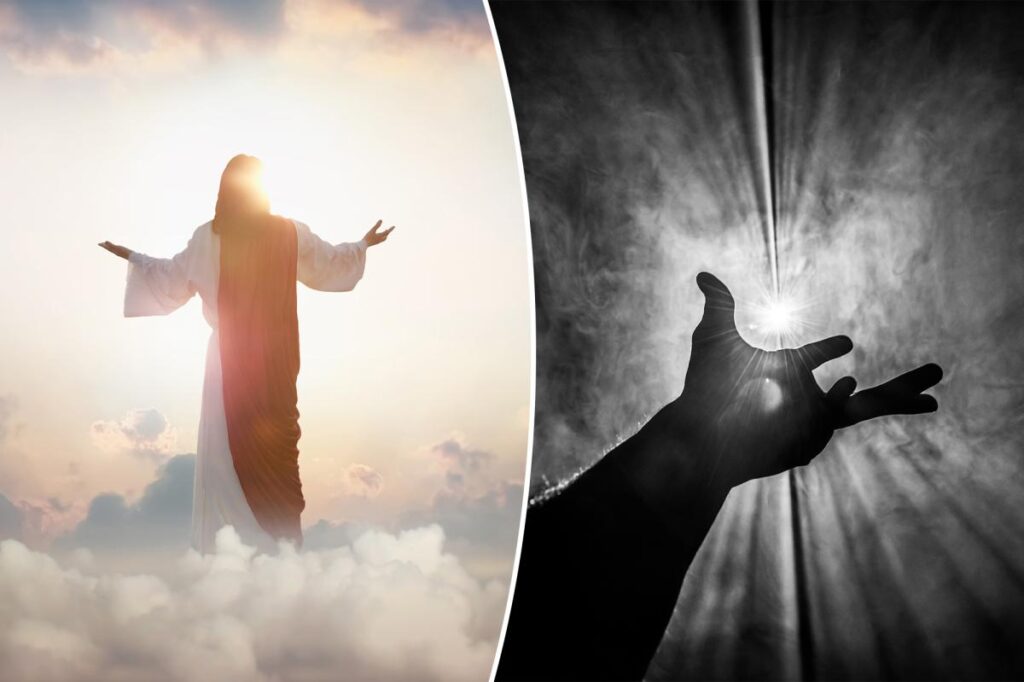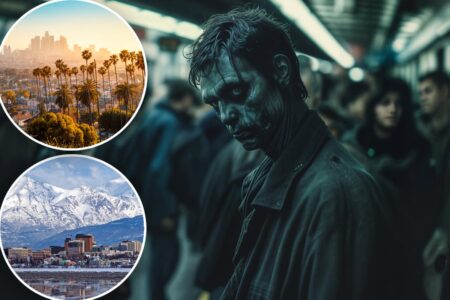It’s one of humanity’s most enduring mysteries: What happens when we die?
Now, a new scientific investigation has taken us a step closer to understanding what may lie beyond the grave, the Daily Mail reported.
Researchers interviewed 48 people who had survived near-death experiences (NDEs), asking them to describe — and even sketch — what they saw in their final moments.
Their findings, published in a paper now awaiting peer review, reveal a wide array of experiences, ranging from divine encounters to surreal, otherworldly journeys.
Some participants described seeing heavenly beings or religious figures, including Jesus and God.
One recalled, “There were stone stairs on the left in front of me, and Jesus was toward the top, wearing a white robe.”
Another said, “God appeared as a great light in the distance.”
Others reported experiences that defied any traditional religious framework. One person claimed to have seen a “black hole,” while another described a cosmic “matrix” made up of “many grid points, all connecting in multiple dimensions.”
Another participant described an angel with “exquisite white wings, the feathers incredibly detailed and layered onto one another,” and a “face like that of a Greek god.”
Lead author Dr. France Lerner of the Beijing Institute of Mathematical Sciences and Applications told the Daily Mail that cultural beliefs play a crucial role in shaping what people experience during an NDE.
This might explain why some participants reported hearing “men reading the Torah,” while others described Jesus or angelic beings.
Despite their diversity, many NDEs shared common themes — tunnels, bright lights, staircases, loved ones, and sometimes, cosmic or geometric patterns.
Researchers found that these experiences typically occurred in one of four distinct “spatial types.”
- A-shapes involved a narrow, tunnel-like vision, possibly linked to reduced blood flow to the brain.
- B- and C-shapes occurred in elliptical or arch-like spaces and are likely triggered as half of the visual field is temporarily lost.
- C5-shapes, the most complex, occurred within a full 360-degree “ellipsoidal enclosure.” People typically progressed from an A-shape to a C5-shape experience as their NDE progressed, leading researchers to believe they have the same physical cause.
Importantly, she stresses that the findings do not suggest the existence of a separable soul or consciousness independent of the body. Rather, they may reflect the brain’s final attempts to make sense of fading sensory information.
From heavenly staircases and angelic beings to cosmic matrices and black holes, the study highlights the deeply personal—and profoundly varied—nature of near-death experiences.
While the study delves into the imagery of near-death visions, another recent study has turned its focus to what happens after people come back.
The research from the University of Virginia (UVA) found that about 15% of severely ill patients report having an NDE — experiences that may include an out-of-body sensation, reunions with deceased loved ones, or a profound sense of peace.
To understand how these individuals cope afterward, UVA researchers surveyed 167 people who had undergone such episodes. Their findings, published in Psychology of Consciousness: Theory, Research, and Practice, reveal that the aftereffects can be as life-altering as the experiences themselves.
Nearly 70% of participants reported major changes in their spiritual or religious beliefs, along with a diminished fear of death.
But the transformation often comes at a cost. Over 20% of participants said they faced relationship struggles or divorces after their experience, while many described enduring loneliness and isolation.
One participant called their NDE a “double-edged sword” — an event too profound to share, for fear of being misunderstood.
Some researchers believe the evidence points beyond biology.
Dr. Jeffrey Long, a radiation oncologist in Kentucky and founder of the Near-Death Experience Research Foundation, has analyzed more than 5,000 cases. Long told Business Insider he has found “overwhelming evidence” of life after death.
According to Long, 45% of NDE survivors report out-of-body experiences, often describing themselves floating above their own bodies — sometimes later confirmed by witnesses.
However, he’s still not sure how they happen.
“I haven’t found any scientific explanation for these experiences,” Long confessed, but noted the breadth of the reports. “I’ve read brain research and considered every possible explanation for NDEs. The bottom line is that none of them holds water.”
Dr. Bruce Greyson, professor emeritus of psychiatry at UVA, agrees that near-death experiences are surprisingly common, affecting between 10% and 20% of people who come close to death ‚Äî about 5% of the population at large.¬Ý
So whether you’re expecting pearly gates, a bright light or another dimension, this world might not be the last thing you see before you leave it.
Read the full article here














